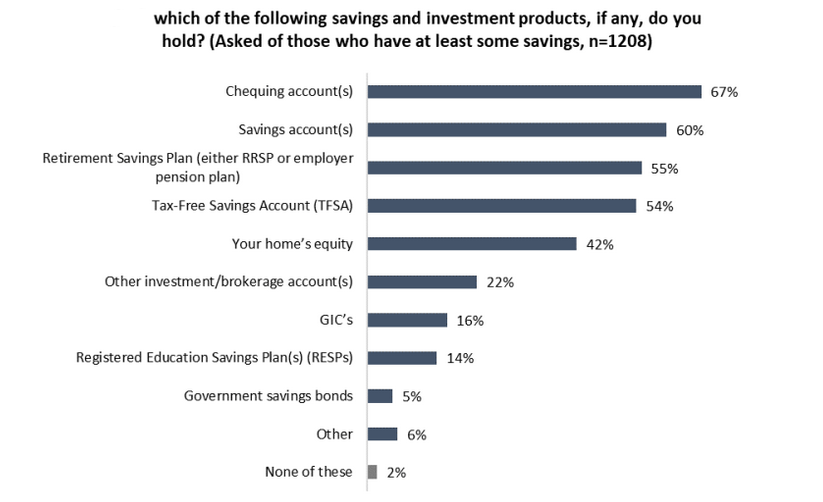
“To get rich, you have to be making money while you are asleep.” — David Bailey.
According to an investigation by the Angus Reid Institute (ARI) in 2018, more than a quarter of Canadians feel “very stressed about money on a regular basis either often or all the time.” The online poll which surveyed the respondents personal experiences rather than merely their income revealed that almost one-third of Canadians could be described as experiencing notable financial hardship. While factors such as debt, cost of living, and expenses associated with raising children were proposed as some of the causes of the financial difficulty faced by those people, the poll further indicated why financial literacy is essential.

We all want to be financially free, not having to worry about money anymore. Perhaps, you dream of having all your days for yourself to do whatever you want, travel around the world and spend your money how you please. The road to personal financial freedom may be hard to know where to start and is paved with sacrifices and determination. Being financially free means that your investments, pension or trust fund can generate enough income for you to live on. The good news is: you can attain financial freedom with responsible spending habits and by investing in stock.

Investing in stock can seem like a challenging thing. But simply put, when you invest in the stock of a company, you become a part owner of that company. It also means that you have a portion of the company’s assets and earnings to claim. The more revenue and profit the company makes each year, the more your claim. Likewise, however, the more loss and debt a company whose shares you own incurs, the more your investment is eaten away. The collapse of Lehman Brothers in September 2008 which contributed to a decline of almost $10 trillion in global equity markets is a momentous example.
Becoming a consistently successful stock investor requires some knowledge and hard work. You have to be ready to do your analysis. There are many approaches to stock analysis, but the two most popular are fundamental and technical analyses. Fundamental analysis is a method of evaluating the stocks of companies by analyzing their underlying quantitative and qualitative factors. When you assess a company’s income statements and balance sheet, you are analyzing its quantitative factors.

What was the revenue of the company for the previous financial year(s)? What were the direct costs of the products sold? How much was realized in gross profit? What were the Selling, General, and Administrative (SGA) Expenses, the costs such as rent, electricity, salaries, legal and accounting fees involved in the overall running of the business? What were the operating income, interest, taxes, and the net income? The operating income is the gross profit less the SGA Expenses, while the net income is the operating income less interest and taxes. The net income is a very critical piece of information to glean from the financial statements as it is the primary indicator of profitability.
EBITDA which stands for Earnings Before Interest, Taxes, Depreciation and Amortization is a metric used to ascertain the actual operating performance of a company. Hence, it is important it is evaluated. Next, assess the company’s balance sheet. A company’s balance sheet has three parts: assets, liabilities, and the ownership equity which is the net worth of the company. For companies in the same industry, you should compare their financial ratios such as Return on Equity (ROE), the Price-to-Earnings (P/E) ratio, and the Earnings-per-share ratio (EPS) ratio. Return on Equity (ROE) is a measure of how much profit a company can generate with the money invested by shareholders. The EPS ratio measures the portion of the company’s profit allocated to each outstanding share of common stock while the P/E ratio, the price of a stock divided by its earnings per share, is a measure of how pricey the stock is relative to its competitors.
The qualitative factors to consider in the course of fundamental analysis include the company’s management team, its innovative or improved products, and its competitive advantage. As a potential investor, you need to know about the quality of the management team. In this regard the advice of Peter Lynch may be handy: “Go for a business that an idiot can run – because sooner or later, any idiot is probably going to run it.” Besides, companies with well-respected and reliable products that are generally accepted usually prove to be good investments. Importantly, also, while analyzing stocks, you should examine what each company is doing in relation to its competitors. In other words, you should do some “competitive analysis.”
Technical analysis is the other approach to the analysis of the stock market. It works principally on the principle that history tends to repeat itself. If a stock had risen to a price before, it would likely rise to it again. Thus, it emphasizes the use of charts to extract invaluable information such as price (the High, Open, Low, and Close prices) and volume (the total volume of shares that have been traded for the day), about stocks and their overall trend and that of the market itself. Technical and fundamental analyses are not necessarily mutually exclusive. You can thus blend the two to provide better insights into stocks and their performance.
Finally, risk management is a very critical part of investing. There can be a decline of enormous magnitude in the stock market at any time within a short period of time. In fact, it is one of its inevitable features. If you cannot stomach such risk, you should reduce your equity exposure. But if you operate the traditional “Buy and Hold” investing strategy, you may not have to worry too much as stocks generally tend to go up in price over extended periods. Your success as a stock investor also depends on your emotions. You may have a brilliant investing strategy, but if you are always fearful whenever there is a dip in the value of your stocks, and greedy whenever there is a climb, you are bound to lose.



































































































































































































